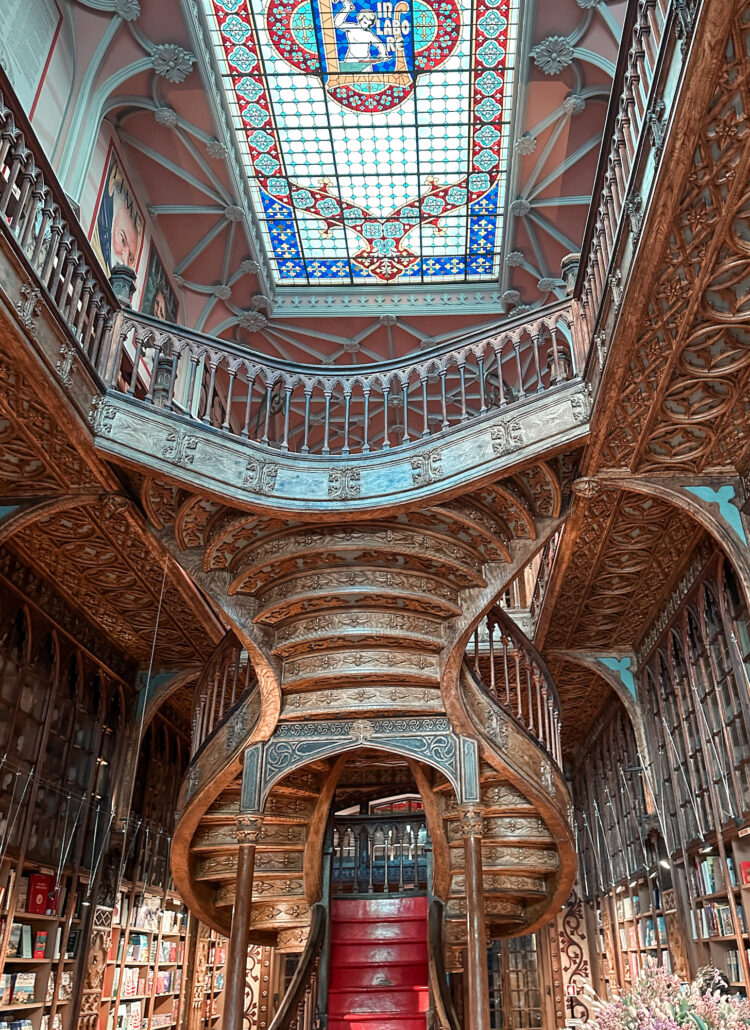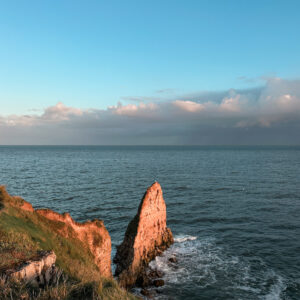Smallest Countries in Europe
What are the smallest countries in Europe? Here’s a look at the seven tiniest nations!
Some of the most visited countries in Europe are also the largest — France, Spain, and Germany are among the largest countries in Europe both in area and population, and they receive millions of tourists each year.
But what about the smallest countries?
Some of these minuscule countries really fly under the radar.
As someone who likes visiting lesser-known destinations and has a goal to visit as many countries as possible, I’ve always been interested in going to the smallest countries in Europe. Currently, I’ve been to five of the seven countries below and I’ll share my thoughts on each one below.
I’ll also talk about how you can visit these tiny countries in Europe, many of which are among the least visited countries in Europe due to their small size and lack of international airports.
Here’s a look at the smallest countries in Europe:
7. Luxembourg
- Area: 998 square miles
- Population: 668,000 people
- Capital: Luxembourg City
- Annual visitors: 1.4 million visitors
The largest country on this list is Luxembourg, though it’s still quite small. For reference, Luxembourg is slightly smaller than the US state of Rhode Island (which is the smallest state in the US.)
Luxembourg is landlocked and bordered by France, Belgium, and Germany. The official languages of this country are French, German, and Luxembourgish, which is very similar to German.
What is Luxembourg known for? It’s a major hub for business and finance, and it’s the wealthiest country in the world per capita. It’s also one of the most expensive countries in the world.
The only destination I visited in Luxembourg was the capital. While parts of this small city were charming enough, I found it to be underwhelming. However, I’d actually like to return to Luxembourg one day to see a little more of the country — there are supposed to be some beautiful historic castles.
Luxembourg City has an international airport that is well-connected for flights within Europe. However, there are no direct flights to Luxembourg from North America. You can also easily get to Luxembourg City by train from Paris, France, which takes two hours and 20 minutes. This is how I visited Luxembourg.
Related: Is Luxembourg Worth Visiting?
6. Andorra
- Area: 181 square miles
- Population: 80,000 people
- Capital: Andorra la Vella
- Annual visitors: 9.4 million visitors
Next up we have Andorra, which is significantly smaller than Luxembourg with an area of just 181 square miles. This tiny landlocked mountainous country is in the Pyrenees between France and Spain.
Andorra is known for being a tax-free shopping haven. The majority of Andorra’s foreign visitors come from neighboring France and Spain to do their shopping. Andorra is also known for its beautiful natural scenery. In the summer, it’s a great hiking destination, while in the winter, it’s popular for skiing.
The official language of Andorra is Catalan, but Spanish and French are also widely spoken due to its proximity to both countries. Interestingly, Portuguese is also widely spoken in Andorra.
I visited Andorra la Vella on a day trip from Barcelona. This is another city I found to be pretty boring and not worth more than a day. However, similar to Luxembourg, I’d actually like to return to Andorra and see more of the country for a couple of days, since I spent all of my limited time there in the capital.
There’s no international airport in Andorra. The easiest way to get here is from Barcelona, Spain, which is 2.5 hours away by car. If you don’t have your own car, there’s also a direct bus you can take.
Related: Andorra Day Trip from Barcelona, Spain
5. Malta
- Area: 122 square miles
- Population: 553,000 people
- Capital: Valletta
- Annual visitors: 3 million visitors
Malta is a compact island nation located in the Mediterranean Sea south of Italy. It’s actually made up of three islands: Malta, the largest island, and the smaller islands of Gozo and Comino.
The official languages of Malta are Maltese and English. Maltese is an interesting language that is heavily influenced by both Arabic and Italian. Most people in Malta also speak English fluently as well since the country was most recently under British rule until 1964. Before the British, Malta was under the control of the Phoenicians, Carthaginians, Romans, Arabs, Normans, Aragonese, French, and more.
Malta is a popular vacation destination because of its beautiful beaches. It’s also known for being one of the top scuba diving locations in Europe. Malta has an international airport that is well-connected with flights from all around Europe, although there are no direct flights from North America.
I visited Malta for four days and based myself in Valletta, the gorgeous historic capital city. Since Malta is so small, you can easily get anywhere on the main island in less than an hour. And despite its small size, Malta is densely populated and very developed — you won’t find any empty land here.
Related: Where to Stay in Valletta, Malta: Top 10 Best Hotels
4. Liechtenstein
- Area: 62 square miles
- Population: 40,000 people
- Capital: Vaduz
- Annual visitors: 116,000 visitors
We’re getting into real micro-nation territory now with Liechtenstein, which is half the size of Malta with an area of just 62 square miles. Liechtenstein is a landlocked country between Switzerland and Austria.
The official language of Liechtenstein is German. Along with several other countries on this list (Luxembourg, Andorra, and Monaco), Liechtenstein is a constitutional monarchy with a royal family.
What is Liechtenstein known for? Despite its tiny size, Liechtenstein is a popular destination for winter sports thanks to its location in the Alps. It’s also one of the most expensive countries in Europe.
While I haven’t been to Liechtenstein yet, it’s on my list. I actually met a girl from Liechtenstein while traveling in Morocco — she said that every time she travels abroad with her passport, she gets stopped for questioning because even international border agents have never heard of her country before!
Liechtenstein does not have an international airport. The easiest way to get to Liechtenstein is from Zurich, Switzerland. Driving from Zurich takes just over an hour, while you can also take a train from Zurich to Sargans and a bus from Sargans to Vaduz, which takes a little over 1.5 hours.
3. San Marino
- Area: 24 square miles
- Population: 34,000 people
- Capital: San Marino
- Annual visitors: 1.9 million visitors
Next up we have an even tinier nation, San Marino. This landlocked country is fully surrounded by Italy (along with one more entry further down this list.) Naturally, the primary language of San Marino is Italian.
San Marino is famous for being the world’s oldest constitutional republic, founded in 301 AD by Marinus, a Christian fleeing persecution from the Roman emperor at the time. San Marino’s current constitution dates back to 1600, making it the oldest constitution in the world that is still in effect.
This minuscule country is known for its beautiful scenery, complete with mountains and rolling hills. Although it’s landlocked, it’s just 12 miles from Italy’s Adriatic Coast and the city of Rimini.
San Marino is the only other country on this list I haven’t been to yet, but I hope to visit soon! Given this country’s small size, it’s not surprising that San Marino does not have an international airport.
The easiest way to get to San Marino is by taking a 30-minute bus ride from the coastal city of Rimini. If you’re coming from any major city in Italy (like Venice, Milan, Florence, or Rome), you will need to first change trains in Bologna to get to Rimini. Rimini is a one-hour train ride from Bologna.
2. Monaco
- Area: 0.8 square miles
- Population: 36,000 people
- Capital: Monaco
- Annual visitors: 218,000 visitors
The second-smallest country in Europe is Monaco. This micro-nation is less than one square mile in area and is fully surrounded by France, aside from Monaco’s small amount of coastline along the Mediterranean Sea. As you can imagine based on its location, French is the official language of Monaco.
Monaco is known for luxury. Hundreds of yachts crowd its marina, designer boutiques line the streets, flashy cars speedy by, and the glitzy Monte Carlo Casino is the pinnacle of extravagance and excess in this tiny principality. Monaco is also known for being among the most expensive countries in Europe.
I visited Monaco twice on a day trip while staying along the French Riviera and I found it to be gaudy and over-the-top. The area I liked best was the historic Monaco Ville, where the Prince’s Palace is located.
Monaco does not have an airport, but the nearest one is in Nice, France, just 12 miles away. You can easily take the train from Nice to Monaco in just 30 minutes. Monaco is so small you really only need one day there — you can literally walk from one end of the country to the other in less than an hour.
Related: Is Monaco Worth Visiting?
1. Vatican City
- Area: 0.19 square miles
- Population: 764 people
- Capital: Vatican City
- Annual visitors: 5 million visitors
Finally, the tiniest country in Europe is Vatican City. Vatican City is fully surrounded by Rome, Italy. It occupies just 0.19 square miles within the Italian capital, but it’s an independent city-state. As the headquarters of the Roman Catholic Church, Vatican City is fully governed by the Pope.
Unlike any of the other countries on this list, you can’t actually stay in Vatican City overnight (there are no hotels.) The only people who live in Vatican City are higher-ups in the Church.
There are only a couple of things you can do in Vatican City. The first is to visit St. Peter’s Square and St. Peter’s Basilica, which is free to enter. The other is to visit the Vatican Museum, which includes access to the Sistine Chapel and the expansive collection of treasures “acquired” by the Church.
There are no shops or restaurants in Vatican City aside from the gift shops and eateries inside the museum.
I’ve actually been to Vatican City three separate times now on different visits to Rome. It’s definitely a must-visit destination while in Rome, but you really just need about half a day for it.
Related: 15 Best Luxury Hotels in Rome, Italy
Smallest Countries in Europe
These are the seven smallest countries in Europe.
If you’re a country counter like me or you just enjoy exploring interesting places, you might want to visit some of these tiny European countries for yourself. Most of these are accessible on a day trip from major cities nearby. The only one that isn’t is Malta, since it’s an island in the Mediterranean Sea.
Although these countries are small, all of them are worth a visit!
Related Guides:




